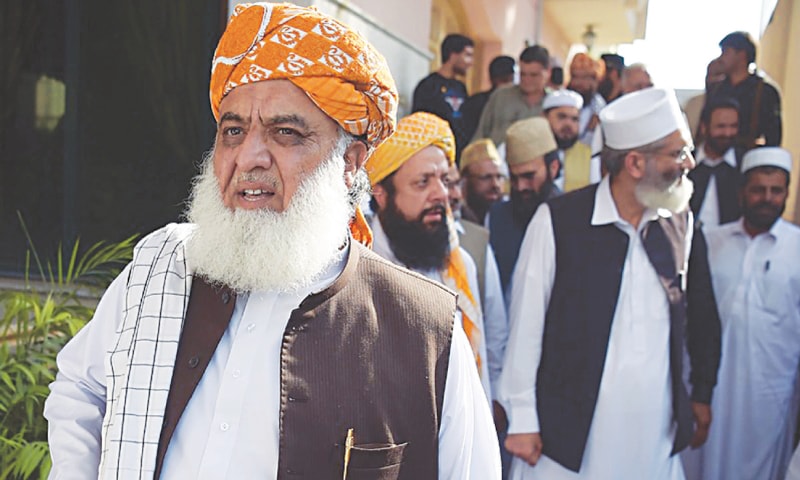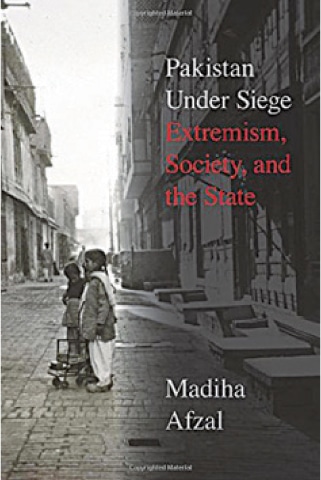The World’s Most Dangerous Country’. Eight years after the headline was used by Newsweek, it hasn’t been forgotten in Pakistan.
This is because the headline reminds us of the coverage of the country internationally: how the world views us. Perhaps, more so, it is remembered because it helps us hang on to the hurt we felt as a society at being at being labelled so There were other headlines too, as well as other stories, painting an image of a radical, dangerous country, at war with itself and those around us. But within Pakistan itself, there was a (dominant) view that this image was unfair, an oversimplification of a complex situation.
Madiha Afzal’s book, Pakistan Under Siege: Extremism, Society and the State, is an effort to add complexity and layers to this uni-dimensional image of a ‘dangerous’ country. Indeed, at present most of those writing on extremism and the Pakistani state and society tend to focus on the emergence of jihadi organisations, 9/11, Pakistan’s war with the Tehreek-i-Taliban Pakistan (TTP) and its relationship with other militant organisations such as the India-centric ones.
A new book attempts to add complexity and layers to Pakistan’s uni-dimensional image as a ‘dangerous’ country
Afzal’s work doesn’t take such a state-centric approach. She uses history, anecdotal events, opinion polls and political events to provide a more holistic and general picture. So, where she discusses the emergence of the TTP and the peace talks held by the group with the Nawaz Sharif-led government, she also provides an overview of the legislation in the country during the Ayub, Bhutto and Zia eras, concluding with the assassination of Salman Taseer.
But it is in the portions where Afzal throws light on the contradictions within society that the book becomes more interesting for the Pakistani reader who may not be too keen on brief overviews of portions of Pakistan’s much discussed and oft-written-about history and politics.
For instance, in the early section of the book, Afzal uses opinion polls to show how Pakistanis’ attitudes towards various militant groups are far from uniform. Where the TTP may not score high, views towards Al Qaeda are more mixed. Even those who don’t approve of Al Qaeda’s use of violence may share the organisation’s attitude towards, or view of, the United States. Similarly, she delves into Pakistanis’ ambiguous attitude towards Lashkar-e-Taiba (LeT) and links it to people’s belief about the ‘illegal’ occupation of Kashmir by India.
More fascinating still is her observation, later in the book, that high school respondents are more favourable toward the Afghan Taliban, TTP and LeT than those with less education. And that, for the LeT — unlike the Afghan and Pakistan Taliban — favourability increases beyond high school. In her view, the ideological nature of the syllabi (also discussed in a chapter of the book) taught in schools may provide students with a framework to accept a radical outlook, including the views of militant organisations.

Afzal also cites academic research which earlier had busted some popular myths, but can always be food for thought.
For instance, soon after 9/11, much was written about the proliferation of madressahs in Pakistan. However, a study by a few academics used different databases to argue that these figures were inflated and were nowhere near the two million which some studies had cited. Tahir Andrabi, Jishnu Das and Asim Khwaja (who carried out the study) put the figure at less than 200,000. They also argued that wherever other school options existed, less than one per cent of parents chose to send their kids to a madressah. In other words, they argued that madressah education was not a preferred choice for parents.
Afzal also provides a quick but comprehensive overview of the Muttahida Majlis-i-Amal (MMA) government which ruled Khyber Pakhtunkhwa (then known as North West Frontier Province) during the Musharraf period. She shows that the government may have been high on Islamic rhetoric, but low on action: “This was part of a larger pattern of legal actions never completed by the MMA government; Islamic bills were introduced and committees were set up but they ended up ignored or [not] tabled.” Indeed, as little has been written on the performance of the MMA government, Afzal’s short synopsis of their rule leaves one wanting more. However, within the parameters of her larger argument, she obviously could not have discussed this further. Perhaps this is a subject she can take up in the future.

Truth be told, a Pakistani reader may feel at many a point in the book that an argument could have been made in more depth or more detail could have been provided. But then this is because Afzal appears to have written this book as an introductory text for those not so familiar with Pakistan. It seems as if she is addressing those who may have been introduced to ‘the most dangerous country in the world’, but needed a quick walk through its history, politics and culture to comprehend that the country itself is not as black and white as portrayed. And in this goal, she succeeds well.
The reviewer is a journalist
Pakistan Under Siege: Extremism, Society and the State
By Madiha Afzal
Brookings Institution Press, US
ISBN: 978-0815729457
208pp.
Published in Dawn, Books & Authors, August 5th, 2018















































Dear visitor, the comments section is undergoing an overhaul and will return soon.